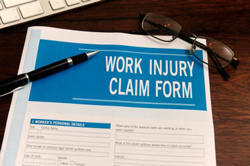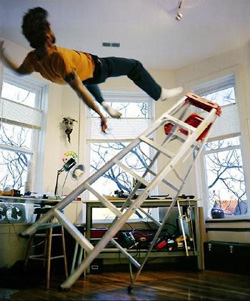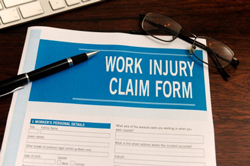Evan Fischer
10 Nov 2011
Health and Safety - How to Prevent Workplace Injury
Health and Safety Training is vitally important for businesses to ensure they operate in a safe environment. Our IOSH Training course is accredited by the Institution of Occupational Safety and Health and is designed to minimise risk at work to avoid some of the problems in the following guest post.
How to Prevent Workplace Injury

Some of us work in professions that come with the risk of serious bodily danger. Construction workers, deep-sea welders, and tandem skydiving instructors, for example, may risk their lives each day simply by showing up for work. Even those that operate a vehicle (for shipping, transport, or other reasons) may be prone to automobile accidents. But the majority of people work at jobs that are eminently safer, whether in offices or the service industry, and don’t face these same hazards. As a result, they might not be prepared for the possible dangers lurking in their otherwise safe work environment. So if you have an occupation that you think could not possibly bring you harm, you might want to think again. In order to prevent workplace injury, you first need to recognize that it could happen to you.
Be Aware of Dangers
Of course, it helps to be aware of your surroundings and see the potential threat lurking in items as seemingly innocuous as, say, a keyboard, a clean floor, or a box of paper. These three items, in fact, represent the major causes of injury in an office environment. “A keyboard?” you may be asking yourself, “How can a keyboard be harmful?”
While it’s relatively unlikely that anyone is going to be attacked by this inanimate object (at least until the robot apocalypse), it can cause you injury through repetitive motion. Performing the same keystrokes hour after hour, day after day can actually result in numbness or even shooting pains in your hands and arms. And the rigid office chair you’re sitting in could lead to back problems. There are ways to combat these problems; by using an ergonomic keyboard and chair, learning proper seated posture and wearing wrist guards, for example; but if you don’t know about the possibility of injury it is unlikely that you’ll seek ways to prevent it.
Slips and Falls

Then there are the two biggies: slips and falls. These hidden dangers account for the majority of personal injuries in the workplace and they are almost always avoidable. How many people slip on a wet floor because they walk right past the warning sign without a glance? And the person standing on a counter or a wheeled office chair to try to reach a box of paper that is too heavy for him or her to heft is just asking for trouble. In both cases, an accident can be easily avoided if proper precautions are taken. All you have to do is be aware of your environment and practice safety first. Watch for warning signs that will alert you to possible hazards. And before you attempt a maneuver that may compromise your balance (and lead to a fall), consider whether there might be an alternative (like calling the facilities manager or getting a proper stepstool for the job).
In short, the power to prevent workplace accidents and injuries lies mainly with you, the worker; and since it’s your body on the line you have every motivation to exercise due caution. While workers' compensation may pay for your medical bills and allow you the time needed to recuperate from a workplace injury, you’re better off simply avoiding it altogether if possible. You only get one body in this life, so give it the care it deserves by doing everything in you power to prevent an injury at work.
 Some of us work in professions that come with the risk of serious bodily danger. Construction workers, deep-sea welders, and tandem skydiving instructors, for example, may risk their lives each day simply by showing up for work. Even those that operate a vehicle (for shipping, transport, or other reasons) may be prone to automobile accidents. But the majority of people work at jobs that are eminently safer, whether in offices or the service industry, and don’t face these same hazards. As a result, they might not be prepared for the possible dangers lurking in their otherwise safe work environment. So if you have an occupation that you think could not possibly bring you harm, you might want to think again. In order to prevent workplace injury, you first need to recognize that it could happen to you.
Some of us work in professions that come with the risk of serious bodily danger. Construction workers, deep-sea welders, and tandem skydiving instructors, for example, may risk their lives each day simply by showing up for work. Even those that operate a vehicle (for shipping, transport, or other reasons) may be prone to automobile accidents. But the majority of people work at jobs that are eminently safer, whether in offices or the service industry, and don’t face these same hazards. As a result, they might not be prepared for the possible dangers lurking in their otherwise safe work environment. So if you have an occupation that you think could not possibly bring you harm, you might want to think again. In order to prevent workplace injury, you first need to recognize that it could happen to you.